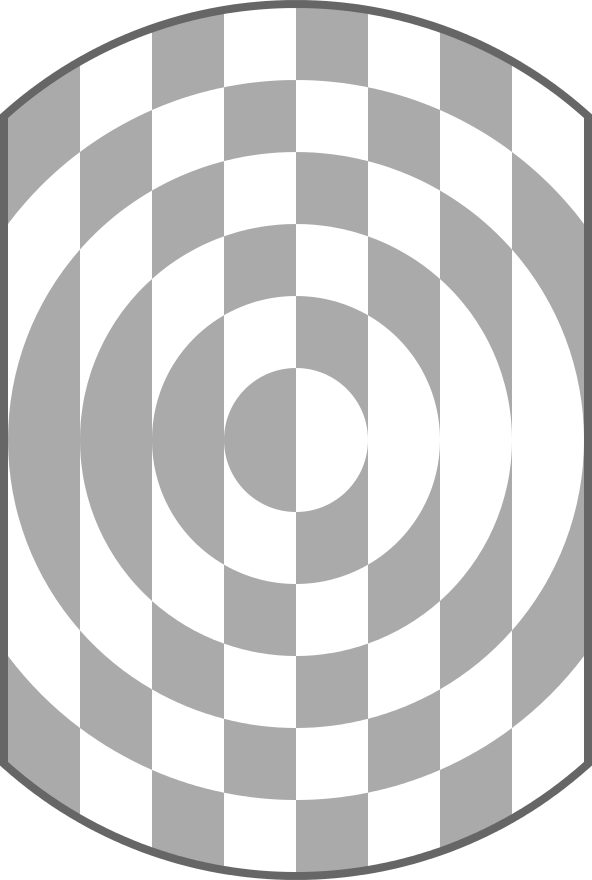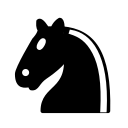
List such gamesTry the rulesChess variants on special boards
Singularity Chess
Chess variant
Chess variant on a strange, distorted chessboard. Pieces move in unusual ways, they bend and make U-turns near the center.
Otherwise the rules of chess apply.
The board contains 64 fields like the normal chessboard. All fields has four sides and four corners like on the normal chessboard – except the two half-circle center fields. In order to make this statement true also for these fields, imagine a new corner in the center of the board, so that these two central fields have not two but three common corners.
Pieces sometimes move differently than expected, unless we understand what "orthogonal" and "diagonal" directions on this board mean.
Rook





The rook moves in "orthogonal" directions. "Orthogonal" means that when a rook arrives to a field it will leave it on the opposite side. This means that the rook turns back in the middle of the board and arrives to the same side it came from. On the middle fields if the rook moved on the direction that is geometrically straight, that would not be "orthogonal", because then the rook would leave the field next to where it entered.
Bishop





The bishop moves "diagonally". "Diagonal" here means that when a bishop arrives to a field it will leave it on the opposite corner. These diagonal directions bend around the middle and meet finally. Therefore the bishop can reach some fields from two different directions at the same time.
When the bishop is on the middle line then the whole middle line counts as a diagonal, as it can be seen on the rightmost diagram. This results in the bishop's ability to move to a differently coloured field in the middle of the board. The two fields in the middle are not only neighbours by edge but also neighbours by corner.
Queen



The queen combines the power of the rook and the bishop as usual.
King



The king can simply move to an adjacent field (by edge or by corner).
Knight












The knight's movement is the most complicated on this board. It follows the "two in one way and one in the other" rule, but these directions are "orthogonal", i.e. rook-like moves, which can bend away from the geometric straight. If the rule above leaded to an adjacent field, then it is not allowed (this can happen in the center).
The knight always moves to an opposite-coloured field. The following rule may help: if we take the adjacent fields around the knight (either by edge or by corner), then it can move to any neighbouring fields around those which are opposite-coloured than the starting field of the knight.
Pawn












Pawns do not follow the above rules for "orthogonal", instead they move forward to be able to reach the other side of the board. They capture however "diagonally" forward, i.e. in bishop directions, left or right from forward. As it can be seen on the diagrams, capturing is sometimes like it were moving two fields forward. This type of capture is however not allowed on the shortest files (so the rook pawns in the initial position cannot capture each other). Capturing is sometimes a horizontal movement when the pawn is in the central line (but this is also a "diagonal" direction).
Pawns can first move two or three fields as long as they do not reach the central line with this move. So the two central pawns can move three from their initial field, the next two can move two, and the others only one. If a central pawn have already moved one field, then it can still make a double-move from there.